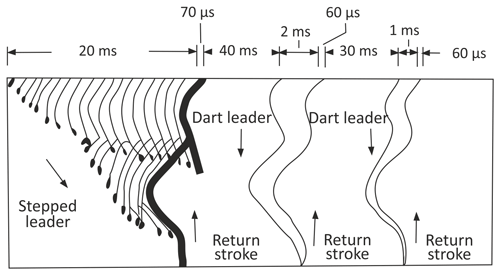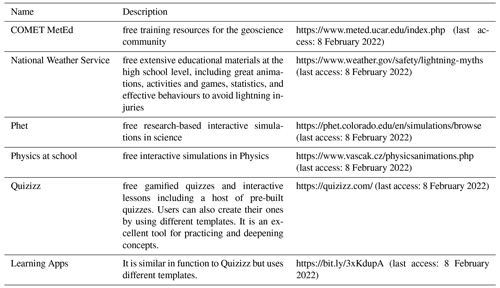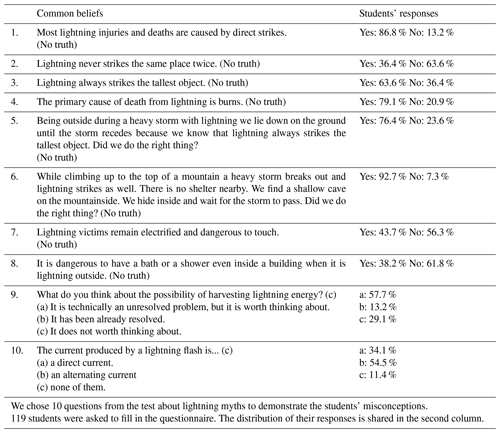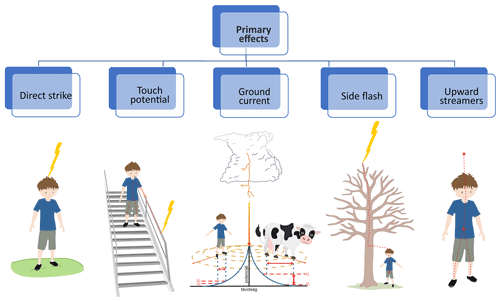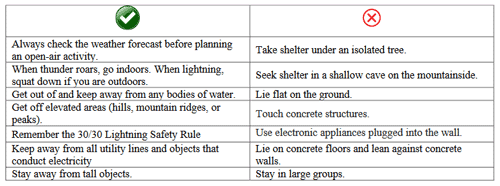How to teach lightning activities to spark students' curiosity?
Ildikó Takátsné Lucz
Péter Tasnádi
There is a worldwide tendency to approach physics in everyday life. Special attention is being paid to the integration of socio-scientific issues into physics teaching such as saving energy, climate change and its consequences, and other examples. Severe weather conditions and lightning activities, which often cause severe damage and sometimes death, can also be found among the weather-related problems. The accurate description of these topics for high school learners is very complex, but presenting them in a relevant, authentic, and inspiring manner is motivating. Motivation is almost as important as the teaching of the content knowledge because learning physics in public education nowadays seems to be less and less popular among students. This paper aims to share our teaching experiences and some of the ideas concerning lightning strikes and the damages caused by them. In this study, we also cover some of the common beliefs and misconceptions related to lightning flashes and examine our students' thoughts about them.
- Article
(2155 KB) - Full-text XML
- BibTeX
- EndNote
Lightning is not only a fearful but also a breathtakingly wonderful natural phenomenon (Fig. 1). Its real characteristics have been unrevealed for centuries, thus people attributed supernatural power to lightning strikes. Due to the lack of knowledge, many myths are attached to them. Some of these still appear in people's minds nowadays. However, there are also positive effects of lightning which are mentioned rather rarely, for example, a medium-size lightning flash produces almost 150 kg of ozone in the atmosphere.
In recent years, lightning strikes have also come into the forefront of public interest as significant damages and forest fires caused by extreme weather conditions and severe thunderstorms. The latter seems to occur more frequently, although the literature does not support it (Finney, et al., 2018; Chakraborty et al., 2021; Romps et al., 2014).
Lightning events appear during thunderstorms that often occur at cold fronts and affect people's well-being and health as well. The study of lightning discharges and their formation is very complex and difficult to discuss in high schools due to the lack of students' knowledge in higher mathematics and physics. Therefore, we used the MER (Model of Education Reconstruction) conception (Duit et al., 2012) to decide how to transfer the scientific knowledge of this topic to the students. We concentrated on the understanding of the phenomenon, so we made simplifying assumptions to describe the mechanism of lightning and its impacts. Even though we focused on the basic principles of lightning physics and primarily analysed lightning-hazardous situations, we must highlight that lightning is also vital for human nutrition and the protection of the ozone layer. Atmospheric Nitrogen (80 % of the molecules in the Earth's atmosphere are composed of two nitrogen atoms bonded together (N2) is a fairly inert element, it does not react easily with other compounds, so before being used by most living beings must go through a fixation process, which can occur abiotically in natural conditions as a result of atmospheric electrical discharges or lightning. The N2 fixation process is a combination with oxygen or hydrogen to give oxide or ammonium. When they fix nitrogen on impact in the soil, they are a true feast for plants, which is quickly reflected in extraordinary vigor and growth. Likewise, lightning is essential for human protection by producing ozone in the upper layers of the atmosphere. Tropospheric ozone in greater percentage is formed by chemical reactions from nitrogen oxides produced by lightning (Borucki and Chameides, 1984). Some teaching resources were created based on a few excellent books, articles (Cooray, 2015; Cooray et al., 2007; Uman, 1987; Rakov and Uman, 2013; Cooper et al., 2016; Cooper and Holle, 2019), and the platform MetEd (Meteorological Education https://www.meted.ucar.edu/index.php, last access: 15 December 2021).
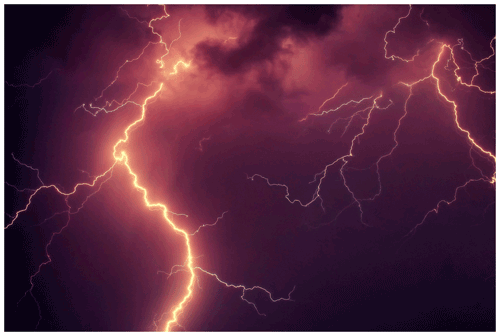
Figure 1Lightning is a beautiful natural phenomenon. (Source: Pixabay https://pixabay.com/hu/photos/vill%c3%a1m-zivatar-thunderbolt-3087117/)
The importance of our research is also supported by the new curriculum, which was introduced in Hungary last year. Some new topics have emerged into the physics curriculum. Several meteorological areas can be found among them, such as the formation of clouds and precipitation, and the physics of lightning discharges. The basic principles of lightning protection and the proper behaviour during thunderstorms are also included in the new curriculum.
The aims of our research are twofold:
For physics teachers and future physics teachers:
-
to make suggestions for them to consider what and how to teach this topic in high schools,
-
to share our teaching experiences with them,
-
to create some teaching resources, which can be effectively used for self-learning at home and in classroom activities.
For students:
-
to dispel their misconceptions related to lightning,
-
to awaken their curiosity and to increase their physics engagement and motivation,
-
to provide students with behaviours to avoid lightning injury and promote lightning safety with their families and friends.
In this paper, we first review the scientific knowledge about lightning, which can be integrated into the high school physics curriculum. Then the properties of lightning strokes will be briefly summarized, especially those thatdetermine the biological effects of flashes. Then a short insight will be given into the interactions of lightning flashes with humans and the different types of injuries caused by them. Finally, some of the results of our survey will be presented to demonstrate the importance of addressing the topic in high schools as well.
2.1 First stage – creating teaching resources and pre-test
As the phenomenon is very complex and multifaceted, we first determined the focal points we would teach. We also examined their interdisciplinary implications and created some teaching resources (summaries, worksheets, and some online games using web 2.0 apps, Takatsne Lucz, 2021). 54 students (two classes, 16–17-year-old pupils) were selected to test our materials. All of them have never learned about these topics. They were asked to complete pre-and post-tests. Some of their responses are shared in the diagram below (Fig. 5).
2.2 Second stage – the lessons
The lessons about lightning activities and the basic principles of lightning protection can be found in the supplementary part of physics textbooks, mainly embedded in electrostatics. It should be highlighted that the phenomenon is much more complex than limiting it to this chapter of physics. Moreover, further discussions in other chapters (such as magnetic induction and electromagnetic radiation) are needed to get deeper knowledge about lightning strikes. Furthermore, discussing the features of lightning in some other chapters of physics facilitates the knowledge transfer using laws learned in different topics and develops students' approaches to science. During the learning process, we used several simulations and web 2.0 applications, which helped students to acquire a deeper understanding of the phenomenon (Table 1).
The generation of lightning flashes and their role in atmospheric electricity cannot be understood without the knowledge of some important facts in atmospheric physics. Therefore, before studying lightning flashes we briefly summarized the stages of thunderstorm build-up, the formation of thunderstorm clouds, and their electrification processes. After describing how clouds gain charges, and what kind of electric field is generated by them, we examined the operation of the global atmospheric electric circuit. We also studied the relationship between the daily profile of electric field strength and thunderstorm activities. We analysed global lightning maps and observed the global distribution of lightning flashes as well. The introductory experiments in electrostatics (such as the sparks produced by a Van de Graff generator) provide a good opportunity to demonstrate the simplified way of the occurrence of lightning strokes. Then we focused on the physics of lightning flashes, especially the mechanism of lightning strikes. Based on special photos and slow-motion videos we noticed that lightning strikes consist of several stages (Cooray, 2015) (Fig. 2).
Both spatial and temporal structures of lightning are very complex, therefore we separated the whole process into two stages: pre and main lightning. The pre-lightning stage should be identified by the discharge going downwards and forming the discharge channel, while the main lightning should be the return stroke. After then, we highlighted some of the characteristics of lightning strikes. In the literature, four parameters are mentioned as the most important ones for lightning protection. They are:
- i.
the maximum value of lightning current (Imax),
- ii.
the steepness of the lightning current (d),
- iii.
the total charge of the lightning current (dt),
- iv.
the specific energy , which determines the energy deposited by the impulse current in resistance of 1Ω.
Finally, we examined the electric and magnetic fields generated by lightning flashes and their consequences (interactions with humans, generation of thunder, induced electric and magnetic field and their effects, injuries to the nervous system, the ears and to the eyes). Particular attention has been paid to the electromagnetic spectrum of the strikes, the electromagnetic radiation in radio-, visible light, and in high-frequency ranges. The discussion of lightning detection illustrates innovative and well-applied engineering techniques for students interested in engineering. The electromagnetic field of lightning is worth discussing in connection with the teaching of electromagnetic waves. The interpretation of radio waves provides an excellent opportunity to introduce electromagnetic waves. (Turning our radio into the medium or low frequency (app. 1 MHz) a squeaking sound can be noticed when we rub a plastic rod next to it. Naturally, the radio also squeaks during a lightning strike.) Radio waves can be attributed to the fact that lightning works as a huge antenna. According to the antenna model, we can estimate the frequency of radio waves generated by lightning flashes. CG (cloud to ground) lightning striking from an altitude of 2–8 km would radiate in the range of 10–40 kHz. Such waves are emitted by lightning events, but the estimate is inaccurate. The antenna model can be used in high school teaching for understanding the phenomenon, but the calculations for frequencies can only be applied with criticism since the charge current in the lightning channel and the antenna is different.) The electromagnetic spectrum of flashes (such as radio waves, visible light, and the X and gamma rays) can be explained by different mechanisms. The visible light produced by lightning flashes can be explained by the movement of ionized and excited particles in the heated lightning channel that emit light. The colour of lightning is determined by their characteristic radiation and influenced by several atmospheric parameters such as the moisture content and the pollutants in the air. The existence of high-energy particles (gamma rays) has long been a controversial issue in lightning physics. Their formation can be attributed to the ionizing effect of the so-called “runaway” electrons. (“Runaway” electrons are those particles, which accelerated to a relativistic rate in the strong electric field generated by lightning.)
Although we cannot accurately describe these events and their effects in high schools, they still give extremely good practical applications of the laws learned in some other chapters of physics and help students gain a deeper understanding of the topic.
2.3 Third stage – common beliefs and misconceptions
Students have many misconceptions based on their previous knowledge and misinformation in media as well. Research on students' beliefs and the way of dispelling them have long been of interest to science educators (Kuczmann, 2017) We were also curious about our students' beliefs about these misconceptions. Therefore, we collected a list of myths regarding lightning activities and created a test based on them. The myths were separated into three groups. The first one for those which were associated with the properties of lightning flashes. The second group contained those statements which related to the principles of lightning protection and the last one linked to the proper behaviour during a lightning flash. Most of the tasks were multiple-choice ones, some statements required true or false responses and there were also some of them which required short written answers or explanations (Table 2). 119 high school students (16–17-year-old) were asked to participate in our survey.
Students completed the Google Form questionnaire under controlled conditions. By analysing these questions and dispelling misconceptions, students not only gain a deeper knowledge of nature, but the pieces of information they have acquired can also protect them from serious injuries. Before giving them explanations for these statements and dos and do nots (Table 3) we had to introduce students to some of the effects and the mechanisms of injuries caused by lightning flashes. They can be classified as primary or secondary ones. The first group includes those impacts which are associated with lightning current passing through the human body, such as direct strike, side flash, touch voltage, step voltage, ground arcing and upward streamer (Fig. 3).
2.3.1 Primary effects
The chart (Fig. 4) shows the distribution of injuries among different mechanisms. The data are based on the analysis of hundreds of cases (Cooper and Holle, 2019; Cooper et al., 2016).
Direct strike: during a direct strike the victim is part of the flash channel and all the current of lightning is directed through his/her body and skin.
Touch voltage: Touch voltage injury occurs when a person stands on the ground and touches an object struck by lightning.
Step voltage (ground currents, arcing and other examples): https://manualzz.com/doc/20196876/understanding-voltage--ground-current-lab-exercise-for-li... (last access: 8 February 2022)
When lightning strikes the ground, the lightning current disperses radially out from the strike point uniformly around a hemisphere (if the soil is uniform and isotropic). As it flows through the ground, a potential difference can be found between two points on the Earth's surface, which are at different distances from the strike point.
(The value of the potential is the highest at the strike point, and decreases away from it.) When a person stands with one foot toward the strike point and the other away from it, the voltage between the two points will drive a current through his body. This current can cause injuries (Cooray, 2007).
Side flash: during a strike the lightning current “jumps” from the struck object to the nearby person due to the voltage between the object and the victim.
Upward Streamer: the downward moving stepped leader and its electrical field induce upward leaders launched from several grounded objects. Only one of them attaches to the downward-stepped leader. A person situated next to the stepped leader can also be a source of such an upward leader. Although these upward leaders last for a very short time (a few tens of microseconds) and these currents are much smaller in amplitude than those in direct strikes, they can also inflict injuries on humans (Cooray, 2015).
2.3.2 Secondary effects of lightning
Secondary or indirect effects of lightning are for example the generation of thunder, the induction due to lightning-generated electric and magnetic field, heating and melting of materials as lightning current passes through the objects, and the emission of electromagnetic radiation. In teaching, we focused on those which are determinants for injuries to the human body and can also serve as a basis for misconceptions.
The major cause of lightning death is cardiopulmonary arrest. The electrical function of the human body and nervous system is controlled by subtle bioelectric effects. Lightning may severely disrupt this process by depolarizing the myocardium (the heart muscles) producing abnormal heart rhythms and cardiac arrest or leading to ventricular fibrillation.
Burns: In the case of a lightning flash, burns are generally superficial, because the major fraction of the lightning current flow over the surface of the human body (Cooper et al., 2016). Thus, the energy dissipation in the body is very small. (For a 60 kg and 1.8 m human it is approximately 2 J kg−1.) (Cooray et al., 2007) However, in special cases (such as wet skin or wearing metal objects) the surface discharge may cause extensive burns.
Shock waves: Since the temperature in the channel increases up to 25–30 000 K in a few microseconds the pressure of the gas suddenly increases. The rapid expansion of the air generates shock waves. Shock waves are particularly dangerous for organs containing liquid or gas (such as the lungs and the middle ear). The most common injury is the rupture of the eardrum. Although sometimes the eardrum remains intact, the hair cells are damaged by the lightning current or the shock waves, which cause permanent hearing loss. (Blumental et al., 2012).
Shrapnel-effect: small fragments from the environment can enter the body cavities and cause different injuries. The severity of these injuries is determined by the kinetic energy, the shape and the density of the shards, the location of the injury, and the clothing covering the body surface (Blumental, 2012).
The chart shows the percentage of the students who answered correctly. The numbers of the questions in the diagram refer to the list below. The keywords or phrases for expected responses are shown in the brackets. Only those answers were accepted as correct ones, which contained all the listed information.
Questions:
-
In normal conditions, the air is a good insulator. In the case of a lightning flash, it must become conductive. How is it possible? (Air conductivity increases/ the critical value of electric field (breakdown) decreases)
-
What types of lightning flashes do you know? (CA: Cloud to air, IC: intracloud, CG: cloud to ground, CC: cloud to cloud)
-
How does thunder occur? Review the process. (Sudden increase in pressure and temperature from lightning, the rapid expansion of the air surrounding and within lightning channel, sonic shock waves)
-
What kind of impacts of lightning do you know? List at least 4 of them.
-
(a) A lightning rod is a rod attached to the top of a building, connected to the ground through a wire. Do you know how it works? Explain it briefly. (The electric field is the strongest at those locations where the conducting object is the most curved; due to the ionization of the surrounding air the pointed object enhances the conductive ability of the air)
-
(b) Do lightning rods attract or repel lightning strikes? (Neither of them, lightning rods provide a conductive pathway of the charge to the Earth.)
-
How can we estimate our distance from a lightning strike, if we know the time elapsed between the thunder and the lightning flash? Let t=3 s and vsound = 330 m s−1 (s=vt, where s is the distance required, v is the speed of the sound and t is the time. Formula + substitution of data + calculation)
-
Astronauts and aircraft pilots observed extensive discharges in the upper atmosphere. Have you ever heard about any of them? Match their photos and their names. Based on Bloom's Taxonomy (Anderson et al., 2000) the major types of knowledge dimensions, ranging in order, are factual, conceptual, procedural, and metacognitive knowledge. (Factual knowledge is the lowest level.) Our research aimed to enhance students' learning of basic information about lightning that they must be acquainted with.
Acquiring this factual knowledge is important for them to understand the deeper relationships among the more complex pieces of information and concepts that define the topic. The results of the post-tests (almost 100 % of students' responses) show that we have achieved our goals. Moreover, dos and do nots we summarized at the end of the learning process, also help them to behave appropriately in lightning-hazardous situations (Table 3).
We realize that we have only scratched the surface of the field of lightning physics and further research is needed in creating teaching resources to achieve a higher level of Bloom's taxonomy.
Exploring and understanding the physics of natural phenomena bring us closer to getting to know the world around us. However, the substantive discussion of lightning events is difficult in high schools due to the complexity of the topic and the lack of higher mathematical and physical apparatus required for the description, certain parts of the topic can be studied through elementary approaches. Based on our experience of testing and the students' feedback we are convinced that the subtopics we chose can help spark their curiosity and promote their scientific and critical thinking. Moreover, the results of the students' pre- and post-tests provide evidence that our teaching resources can also be effective in supporting not only their face-to-face but also their independent learning. Discussing the issues of lightning protection provides students with practical knowledge that can be applied in their everyday life and opens doors for us to dispel several misconceptions about lightning.
Analysis data is available upon request from the correspondence author.
Both of the authors contributed to the writing of this paper. ITL created the teaching resources, made and evaluated the school tests, and edited the manuscript. PT gave the theoretical background.
The contact author has declared that none of the authors has any competing interests.
Publisher’s note: Copernicus Publications remains neutral with regard to jurisdictional claims in published maps and institutional affiliations.
This article is part of the special issue “21st EMS Annual Meeting – virtual: European Conference for Applied Meteorology and Climatology 2021”.
The authors would like to express their special thanks to Mary Ann Cooper, Professor Emerita at the University of Chicago, Illinois for her helpful feedback and comments on improving this work. We would also greatly appreciate Horacio Torres for his constructive comments.
This paper was edited by Tomas Halenka and reviewed by Mary Ann Cooper and Horacio Torres.
Anderson, L. W., Krathwohl, D. R., Airasiana, P. W., Cruikshank, K. A., Mayer, R. E., Pintrich, P. R., Raths, J., and Wittrock, M. C.: A taxonomy for learning, teaching, and assessing, A revision of Bloom's taxonomy of educational objectives, Longman, Abridged Edition 1st Edn., Pearson, 336, ISBN-13 978-0801319037, 2000.
Blumental, R.: Secondary missile injury from a lightning strike, Am. J. Foren. Med. Path., 33, 83–85, https://doi.org/10.1097/PAF.0b013e31823a8c96, 2012.
Blumental, R., Jandrell, I. R., and West, N. J.: Does a sixth mechanism exist to explain lightning injuries?, Am. J. Foren. Med. Path., 33, 222–226, https://doi.org/10.1097/PAF.0b013e31822d319b, 2012.
Borucki, W. J. and Chameides, W. L.: Lightning' Estimates of the Rates of Energy Dissipation and Nitrogen Fixation, Rev. Geophys. Space Phys., 22, 363–372, https://doi.org/10.1029/RG022I004P00363, 1984.
Chakraborty, R., Chakraborty, A., Basha, G., and Ratnam, M. V.: Lightning occurrences and intensity over the Indian region: long-term trends and future projections, Atmos. Chem. Phys., 21, 11161–11177, https://doi.org/10.5194/acp-21-11161-2021, 2021.
Cooper, M. A. and Holle, R. L.: Reducing Lightning Injuries Worldwide, Springer Natural Hazards, Springer International Publishing AG, ISBN-13 978-3030084806, https://doi.org/10.1007/978-3-319-77563-0, 2019.
Cooper, M. A., Andrews, C. J., Holle, R. L., Blumenthal, R., and Aldana, N. N.: Lightning – Related Injuries and Safety, Auerbach's Wilderness Medicine, Vol. 2, 7th Edn., Elsevier, 71–116, ISBN 9780323396097, 2016.
Cooray, V.: An Introduction to Lightning, Springer, ISBN 978-94-017-8937-0, ISBN 978-94-017-8938-7 (eBook), https://doi.org/10.1007/978-94-017-8938-7, 2015.
Cooray, V., Cooray, C., and Andrews, C. J.: Lightning injuries in humans, J. Electrostat., 65, 386–394, https://doi.org/10.1016/j.elstat.2006.09.016, 2007.
Duit, R., Gropengießer, H., Kattmann, U., Komorek, M., and Parchmann, I.: The Model of Educational Reconstruction – A Framework for Improving Teaching and Learning Science, in: Science Education Research and Practice in Europe, edited by: Jorde, D. and Dillon, J., Cultural Perpectives in Science Education, Vol 5., SensePublishers, Rotterdam, https://doi.org/10.1007/978-94-6091-900-8_2, 2012.
Finney, D. L., Doherty, R. M., Wild, O., Stevenson, D. S., MacKenzie, I. A., and Blyth, A. M.: A projected decrease in lightning under climate change, Nat. Clim. Change, 8, 210–213, https://doi.org/10.1038/s41558-018-0072-6, 2018.
Kuczmann, I.: The Structure of Knowledge and Students' Misconceptions in Physics, in: AIP Conference Proceedings 1916, American Institute of Physics, 2017.
Rakov, V. A. and Uman, M. A.: Lightning Physics and Effects, University Press, Cambridge, UK, 2003.
Romps, D. M., Seeley, J. T., Vollaro, D., and Molinari, J.: Projected increase in lightning strikes in the United States due to global warming, Science, 346, 851–854, https://doi.org/10.1126/science.1259100, 2014.
Takatsne Lucz, I.: Web 2.0 applications as the tools of motivation in Secondary Physics Education, in: IOP Journal of Physics: Conf. Series, Volume 1929, GIREP-ICPE-EPEC-MPTL, Budapest, Hungary, 1–5 July 2019, 1929 012041, https://doi.org/10.1088/1742-6596/1929/1/012041, 2021.
Uman, M. A.: The Lightning Discharge, Dover Publications, INC. Mineola, New York, USA, ISBN 0486414639, ISBN-13 9780486414638, 1987.






